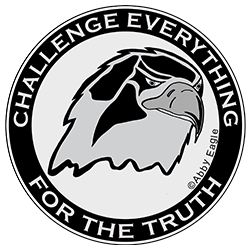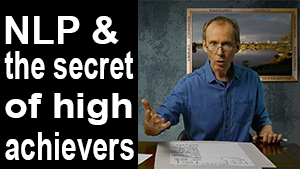
Can you harness the power of positive thinking? Phone 07 5562 5718 or send an email to book a free 20 minute telephone or Skype session with Abby Eagle. NLP Coaching, Hypnotherapy and Meditation. Gold Coast, Robina, Australia. Online NLP Coaching sessions on Skype and by phone also available.
How to Facilitate Authentic Thinking & Authentic Learning
An article by L. Michael Hall 2018 Morpheus #41 September 26th 2018

When you coach, the conversation you engage your client in is designed to get him or her to authentically think and to think about oneself— one’s innermost thoughts, hopes, fears, wants, needs, etc. Simultaneously this evokes several other things in your client. At the very same time that your client is discovering his or her internal world— your client is learning how to “think.” Now most people think that they are thinking when actually they are not. What they are calling “thinking” is mostly self-criticism. What passes for thinking is a litany of problems, pseudo-solutions, a jumble of options, etc. True thinking is rare. Hence the need for a Coach!
True thinking involves actually listening to oneself so that you can hear not only the content of your thoughts, but your thinking structures, frames, and contexts. That’s really difficult. To learn to do that we have to first learn how to have dialogue conversations with ourselves. To truly think, Jordan Peterson says that you have to “be at least two people at the same time.” You have to take two or more roles to yourself so that instead of self-judgment, you let those two roles that you are playing disagree and talk out the disagreement.
“Thinking is an internal dialogue between two or more different views of the world. ... True thinking is complex and demanding. It requires you to be articulate speaker and careful, judicious listener, at the same time. You have to learn to give and take and to modify your premises and adjust your thoughts. In consequence, thinking is emotionally painful as well as physiologically demanding. You have to be very articulate and sophisticated to have all of this occur inside your own head. What are you to do if you aren’t very good at thinking, at being two people at one time? That’s easy. You talk. But you need someone to listen. A listening person is your collaborator and your opponent. A listening person tests your talking (and your thinking) without having to say anything.” (2018, 12 Rules for Life, pp. 241-242, italics added)
Ah, “A listening person is your collaborator and your opponent.” That fits the Meta-Coach description of “compassionately challenging.” As a coach, your job is in part to get your clients to talk—to talk aloud without censoring what they are saying. Then you get them to hear what they are saying. The “collaboration part” is making it safe for them to speak up whereas the “opponent part” is getting them to truly hear what they are saying. For that, you challenge and confront. Do this and you are really earning your fee as a professional coach!
The reason your clients need to talk and talk out-loud is because that’s how people think. People think by talking. Now while this is generally true of all of us, for some people— talking is their primary way of thinking. They have to think aloud. For them, they are not able to think quietly in their mind. When they try to think quietly in their mind, they immediately are overwhelmed by a rush of thoughts— memories, representations, ideas, etc. And whatever they choose to focus on, they do not stay focused for long. That’s because they are constantly interrupting themselves with other thoughts racing around in their heads. That’s why they have to talk aloud.
This constant intrusion of thoughts creates a constant and ongoing set of self-interruptions and prevents them from working things out in their mind. They do not have an internally quiet mind, but a mind full of noise. In their mind, there is constant noise, interruptions, and rush of thoughts. If only they could retreat within the mind to a quiet contemplation of their concerns! But no. For many people that is simply not possible.
They need to talk out-loud— and they need someone to first listen and then to guide their talk. The listening allows them to say things out-loud so that they can figure out what they are thinking. Strange as that sounds, that’s actually common to all of us when there are lots of things going on in the mind—we can’t know or figure out what we are thinking until we say it out-loud.
That’s why we need someone who will listen— and better, someone who will not try to solve things, but just listen with empathy, compassion, and who can summarize what we are saying. When you do that as a coach— you offer a tremendous gift to your client. In helping them hear themselves— so they discover what they are actually thinking, caring about, valuing, etc. and then they can set a goal for what to do about the discoveries.
When people “think”—they are simulating the world. They are creating a mental model about the world (NLP). They are constructing a map about what things are, what’s happening, how it operates, what it means, and what to do about it. Yet as you also know from your NLP and Neuro-Semantic studies, when people simulate the world— their mental mapping of things are subject to all sorts of problems— over-generalizations, deletions, and distortions. That’s because they are mapping things with various cognitive distortions, cognitive biases, and cognitive fallacies. This is another reason they need to talk out-loud in the presence of a non-judging coach who can skillfully hear and identify these mapping problems.
When we talk out-loud, we express and reveal our thoughts and how we are thinking, namely, our thinking style. Most of the time, our thinking style is completely outside-of-consciousness. We are not aware of it. But when we speak out-loud, we often begin to become aware of the way we are thinking. When that happens, a client is likely to say, “You know, it sounds silly when I say that out-loud.” And so it is. The client is making manifest what’s typically unconscious and is now at a place where he or she has a new choice.
Talking and thinking about our mental simulations leads to plans— the plans that we construct about what to do and how to act. If you do a good job of simulating the world, you can figure out what both the intelligent things to do and the stupid things to not do — another benefit of coaching. Next time you sit with a client— aim to stimulate his or her thinking by talking out-loud as you compassionately challenge. ___ © Author L. Michael Hall, Co-founder of Neuro Semantics.
For more--- check out the newest book from Neuro-Semantic Publications--- Executive Thinking (2018)
Share With Friends
| DISCUSSION GROUPS | |
|---|---|
 |
|
| NLP Future Selfing | |
| NLP, Hypnotherapy & Meditation | |
| NLP Peace Mapping | |
| Facebook Discussion Group | |
| The secret of high achievers |
|---|
 |
| How to build a powerful team |
 |
| How to coach yourself using NLP. |
 |



